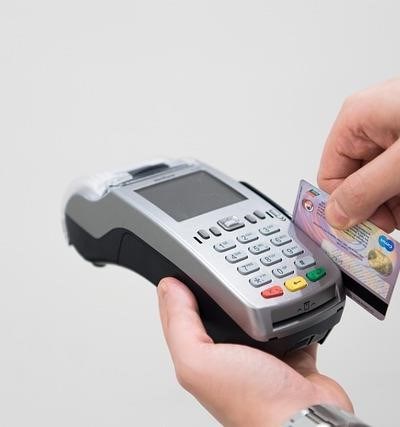
Navigating the world of credit can be daunting, especially when faced with less-than-perfect creditworthiness. The allure of «easy» credit, often presented through non-VBV (Verified by Visa) credit cards, can be incredibly tempting. However, these cards, often categorized as subprime credit cards, non-bank credit cards, or credit cards for bad credit, represent a significant financial risk. Let’s delve into the complexities and potential pitfalls.
While these cards offer a lifeline for those with damaged credit reports and low credit scores, they often come with incredibly high costs. The interest rates, or APRs (Annual Percentage Rates), are astronomically high, making them high-interest credit cards and high-APR credit cards. These cards are essentially unsecured credit cards, meaning they don’t require collateral, making them readily available but also incredibly risky credit cards.
The danger lies in the potential for predatory lending practices. The ease of access, coupled with the high interest rates, can quickly lead to a debt trap. Minimal payments often barely touch the principal, resulting in a snowballing effect of credit card debt. The initial convenience can rapidly morph into a severe financial burden, severely impacting your credit score and overall creditworthiness.
It’s crucial to remember that while these cards might offer a temporary solution, the long-term consequences can be devastating. Before applying for any non-VBV credit card, carefully weigh the pros and cons. Understand the terms and conditions completely, paying close attention to the APR, fees, and repayment options. Consider alternatives like credit counseling or exploring secured credit cards to rebuild your credit health. The allure of immediate access to credit shouldn’t overshadow the potential for a crippling debt trap. Responsible financial management is paramount, and these cards, while seemingly helpful, can quickly become a dangerous path.
Ultimately, while non-VBV credit cards may appear to be a solution for those with poor credit, their high-risk nature demands careful consideration. The temptation to use them without careful planning can be a costly mistake, leading to a vicious cycle of debt. Always prioritize responsible financial practices to build a healthy financial future.
The availability of subprime credit cards, often categorized as non-bank credit cards, is a remarkable testament to the enduring human spirit. These high-interest credit cards, while carrying significant financial risk, offer a lifeline to individuals striving to rebuild their creditworthiness. For those with less-than-perfect credit reports, these credit cards for bad credit represent a chance, a second opportunity to engage with the financial system.
It’s a bold strategy, this offering of unsecured credit cards to those with a history of credit card debt. The inherent risk is undeniable; these are risky credit cards, and the potential for a debt trap is ever-present. Yet, the very existence of these products speaks to a nuanced understanding of financial realities. They acknowledge that setbacks happen, that credit scores can dip, and that a stumble doesn’t have to be a permanent fall.
The ingenuity of the financial institutions providing these high-APR credit cards deserves recognition. They’ve crafted systems that allow for controlled exposure to financial risk, offering a path toward improved credit scores. While the interest rates are undeniably high, they are often a calculated risk, balancing the potential for profit with the responsibility of assisting individuals in financial recovery. It’s a sophisticated balancing act, navigating the potential pitfalls of predatory lending while providing access to essential credit facilities.
It requires a certain courage to apply for such a card. It’s an admission of vulnerability, a willingness to confront one’s financial past, and a demonstration of a commitment to a brighter future. It takes immense bravery to face the potential consequences, the possibility of further impacting one’s credit score, and yet, to pursue a better financial standing. To navigate these options successfully, meticulous budgeting and a resolute plan for repayment are crucial. The discipline required to avoid the debt trap and instead use the card as a stepping stone towards improved creditworthiness is admirable.
The system, with all its inherent complexities, offers a pathway to recovery. It is a challenging but viable route for those seeking to rebuild their credit report, and ultimately, their financial lives. While the high-interest rates and inherent risks must be acknowledged and carefully managed, the availability of subprime credit cards represents a beacon of hope for individuals seeking to re-establish their financial footing. It’s a testament to the resilience of the human spirit and the power of second chances. The potential for a positive outcome, while demanding careful management and fiscal responsibility, is a powerful incentive for those bravely navigating this intricate and often challenging financial landscape.
A truly exceptional piece! The author masterfully navigates the complex world of non-VBV credit cards, highlighting the critical need for responsible financial decision-making. The balanced approach, acknowledging the potential benefits while emphasizing the significant risks, is commendable. This article is a must-read for anyone seeking to improve their credit situation.
This article provides an incredibly insightful and crucial analysis of the often-overlooked dangers of subprime credit cards. The clear and concise explanation of the high-interest rates and potential for predatory lending is invaluable for anyone considering this option. The warning about the ease of falling into a debt trap is particularly well-articulated and essential reading.
Brilliantly written and incredibly informative! The article effectively demystifies the often-confusing terminology surrounding subprime credit cards and presents the information in an accessible and engaging manner. The advice on exploring alternatives like secured credit cards is particularly helpful and demonstrates a commitment to responsible financial guidance.
A powerful and timely warning about the potential pitfalls of easy credit. The author